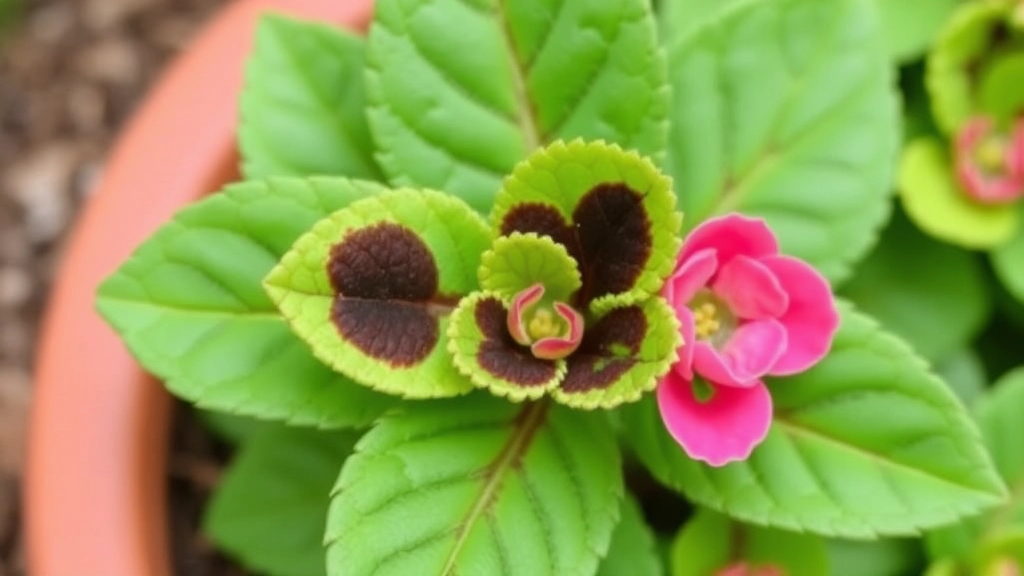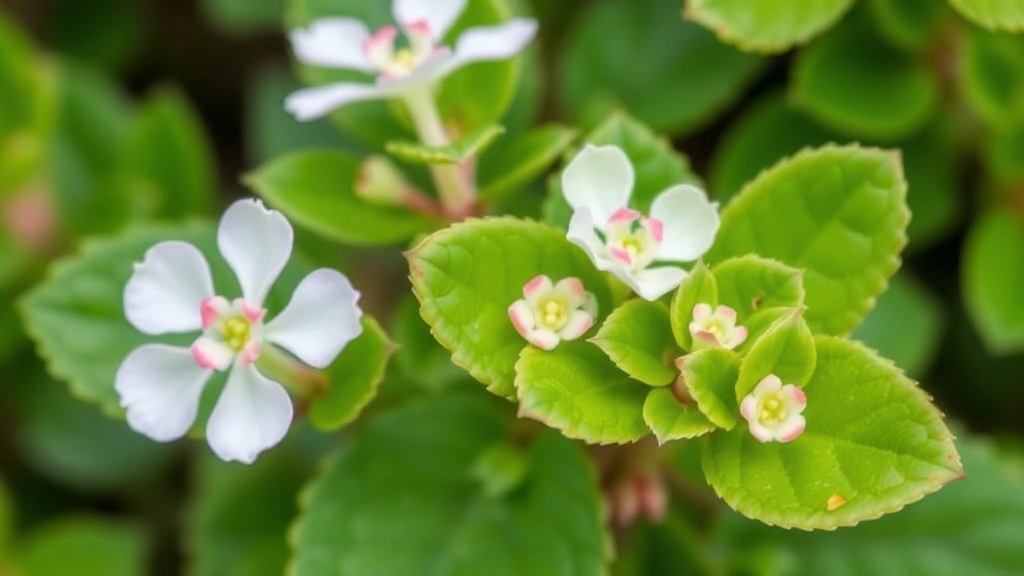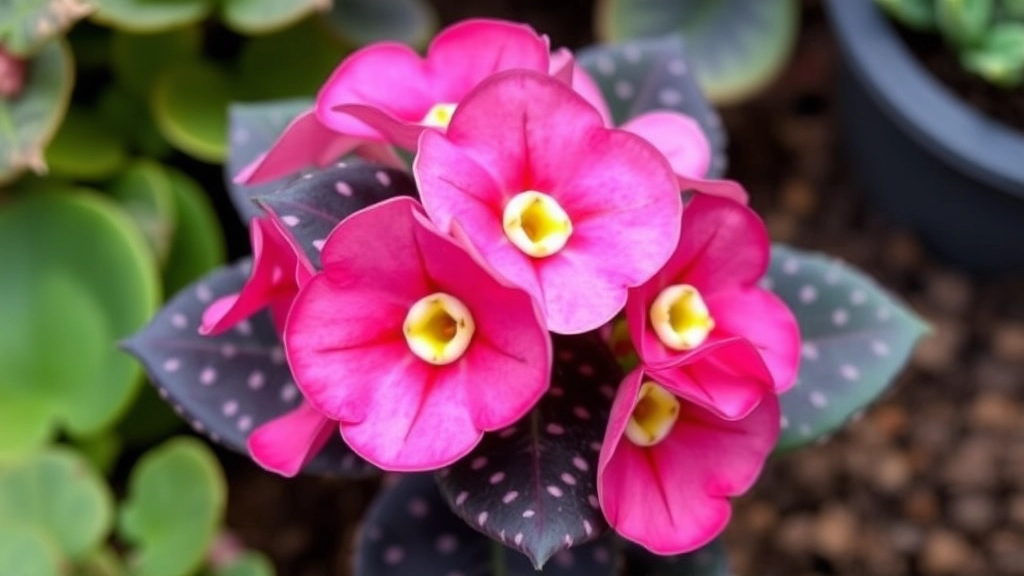Kalanchoe Black Spots: Causes and Solutions
If you’ve ever noticed Kalanchoe black spots on your beloved plant, you’re not alone. As a plant enthusiast, I know how frustrating it can be to see your Kalanchoe struggling. Black spots can signal a variety of issues, from fungal infections to improper watering practices.
In this guide, I’ll walk you through the common causes of Kalanchoe black spots and how to effectively treat and prevent them. By understanding the root of the problem, you can take the right steps to restore your plant’s health and keep it thriving.
Common Causes of Black Spots on Kalanchoe
If you’ve noticed unsightly black spots on your Kalanchoe, you’re not alone. Many plant enthusiasts face this issue, and it can be concerning. Understanding the common causes of these black spots is the first step in addressing the problem effectively.
1. Fungal Infections
One of the primary culprits behind black spots on Kalanchoe is fungal infections. These can arise from:
- Overwatering: Excess moisture creates a perfect environment for fungi.
- Poor Air Circulation: Crowded plants can trap humidity, promoting fungal growth.
2. Bacterial Diseases
Bacterial infections can also lead to black spots. Symptoms often include:
- Water-soaked lesions: These may appear dark and spread quickly.
- Soft, mushy texture: Affected leaves feel different from healthy foliage.
3. Sunburn
Kalanchoe plants thrive in bright light but can suffer from sunburn if exposed to intense sunlight for too long. Signs of sunburn include:
- Brown or black patches: These spots usually develop on the leaf edges.
- Wilting or curling leaves: Affected leaves may lose their firmness.
4. Nutrient Deficiencies
Lack of essential nutrients can manifest as black spots. Common deficiencies include:
- Potassium: Important for overall plant health.
- Magnesium: Aids in photosynthesis; its absence can lead to dark spots.
5. Pest Infestations
Certain pests, such as aphids or spider mites, can cause damage that appears as black spots. Look for:
How to Identify Black Spots on Kalanchoe Leaves

So, you’ve noticed some black spots on your Kalanchoe, and you’re probably wondering, “What’s going on?”
Identifying these pesky black spots is the first step toward getting your plant back to its vibrant self.
Signs of Black Spots
- Colour and Texture:
- Look for dark brown or black patches.
- They might feel soft or mushy, indicating rot.
- Location:
- Check the underside of leaves.
- Spots can also appear at the tips or edges.
- Spread:
- If the spots are spreading quickly, it’s a sign of something more serious.
- Keep an eye out for any wilting or yellowing leaves nearby.
- Accompanying Symptoms:
- Are there any other signs like a sticky residue or webbing?
- These could indicate pests or fungal infections.
Quick Check
- Visual Inspection:
- Just take a good look at your plant.
- If you see spots, grab a magnifying glass for a closer look.
- Feel Test:
- Gently squeeze the affected areas.
- If they’re squishy, it’s time to take action.
Preventative Measures for Black Spots
As we delve into preventative measures for black spots on Kalanchoe, it’s essential to understand that proactive care can save your plants from potential distress.
Effective Treatments for Infected Kalanchoe

When you notice black spots on your Kalanchoe, it can be disheartening. The good news is that there are effective treatments to help restore your plant’s health.
First, it’s essential to identify the type of infection affecting your Kalanchoe, as different issues require different approaches. Here’s a straightforward guide to tackle black spots:
- Remove Affected Leaves: Start by carefully pruning any leaves with black spots. This helps prevent the spread of infection to healthy parts of the plant. Use clean, sharp scissors to avoid introducing further pathogens.
- Adjust Watering Habits: Overwatering can lead to fungal infections. Ensure that your Kalanchoe is in well-draining soil and only water when the top inch of soil feels dry.
- Improve Air Circulation: If your plant is crowded or in a humid environment, it might be time to relocate it. A well-ventilated area can significantly reduce the risk of fungal growth.
- Apply Fungicide: If the black spots persist, consider using a fungicide specifically formulated for houseplants. Follow the instructions carefully, and ensure you apply it in a well-ventilated space.
- Natural Remedies: For those who prefer organic solutions, a mixture of water and baking soda can be effective. Spray this solution on the affected areas to help combat fungal infections.
- Monitor Light Conditions: Ensure your Kalanchoe receives adequate light. Insufficient light can weaken the plant, making it more susceptible to disease.
By implementing these treatments, you can help your Kalanchoe bounce back from its black spot woes.
Environmental Factors Contributing to Black Spots
Have you ever noticed unsightly black spots appearing on your Kalanchoe leaves? These issues can often be traced back to environmental factors that affect your plant’s health. Understanding these factors can help you prevent further damage and keep your Kalanchoe thriving.
1. Humidity Levels
Kalanchoe prefers moderate humidity.
- Too Low: If the air is too dry, it can lead to stress, making the plant more susceptible to diseases.
- Too High: Excessive humidity can promote fungal infections, which often manifest as black spots.
2. Watering Practices
Overwatering is a common mistake. For more detailed advice, you can refer to our expert tips on Kalanchoe care.
- Signs of Overwatering: Yellowing leaves, mushy stems, and black spots.
- Signs of Underwatering: Dry, crispy leaves, but black spots can still develop from root stress.
3. Light Conditions
Kalanchoe thrives in bright, indirect light. If you are looking to grow Kalanchoe from seeds, check out our guide on growing Kalanchoe Blossfeldiana from seeds.
- Too Much Direct Sunlight: This can scorch the leaves, leading to blackened areas.
- Too Little Light: Insufficient light can weaken the plant, making it more prone to infections.
4. Temperature Fluctuations
Kalanchoe is sensitive to extreme temperatures.
- Cold Drafts: Exposure to cold air can cause stress, resulting in black spots.
- Heat Stress: High temperatures can also affect the plant’s health, leading to similar issues.
5. Soil Quality
The type of soil you use can significantly impact your Kalanchoe.
- Poor Drainage: Soil that retains too much water can lead to root rot, which presents as black spots on the leaves.
- Nutrient Imbalance: Lack of essential nutrients can weaken your plant, making it more vulnerable to diseases.
Best Practices for Kalanchoe Care and Maintenance
So, you’ve tackled the issue of black spots on your Kalanchoe, but how do you keep your plant thriving in the long run?
Let’s dive into some straightforward care tips that can help you maintain a healthy, happy Kalanchoe.
FAQs about Kalanchoe Black Spots
What are the common signs of black spots on Kalanchoe leaves?
Common signs include dark brown or black patches, often soft or mushy, indicating rot. These spots can appear on the underside, tips, or edges of leaves and may spread quickly. Accompanying symptoms like sticky residue or webbing might indicate pests or fungal infections.
How can I quickly check for black spots on my Kalanchoe?
Perform a visual inspection of your plant and use a magnifying glass if necessary. Gently squeeze the affected areas; if they’re squishy, it’s time to take action.
What should I do if I find black spots on my Kalanchoe?
Start by removing affected leaves to prevent the spread of infection. Use clean, sharp scissors for pruning. Adjust your watering habits to avoid overwatering and ensure the plant is in well-draining soil.
How can I improve air circulation for my Kalanchoe?
If your plant is in a crowded or humid environment, relocate it to a well-ventilated area. This can significantly reduce the risk of fungal growth.
What fungicide should I use for persistent black spots?
Use a fungicide specifically formulated for houseplants. Follow the instructions carefully and apply it in a well-ventilated space.
Are there any natural remedies for treating black spots on Kalanchoe?
Yes, a mixture of water and baking soda can be effective. Spray this solution on the affected areas to help combat fungal infections.
How important is light for preventing black spots on Kalanchoe?
Ensure your Kalanchoe receives adequate light. Insufficient light can weaken the plant, making it more susceptible to disease. Proper light conditions are crucial for the plant’s overall health.
Can overwatering cause black spots on Kalanchoe?
Yes, overwatering can lead to fungal infections, which manifest as black spots. Ensure you water your Kalanchoe only when the top inch of soil feels dry.
References
-
Gardening Know How – Kalanchoe Black Spots: How To Treat Black Spots On Kalanchoe
-
The Spruce – How to Care for Kalanchoe
-
Houseplant411 – Kalanchoe Plant Care Guide
